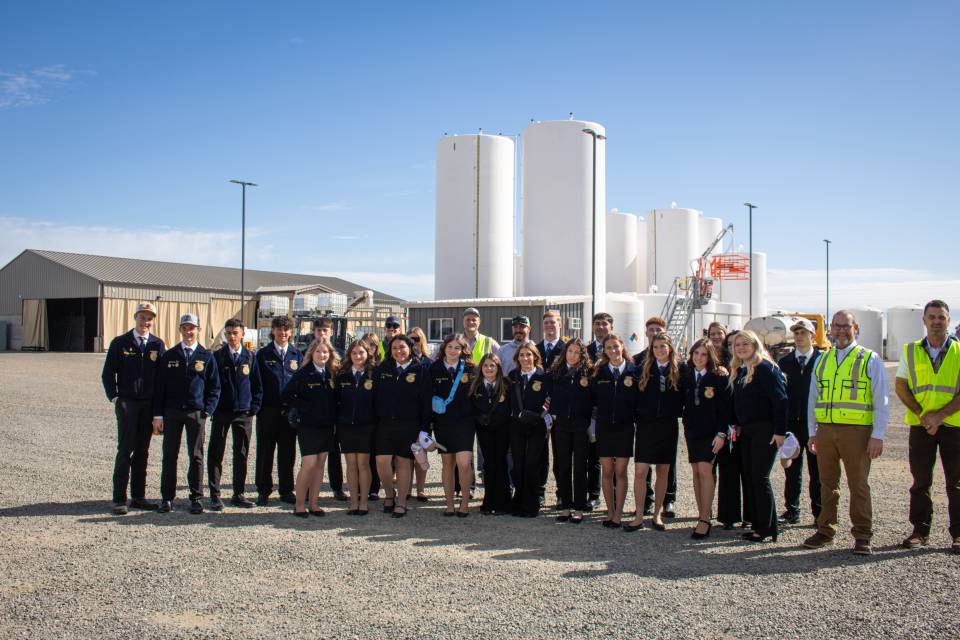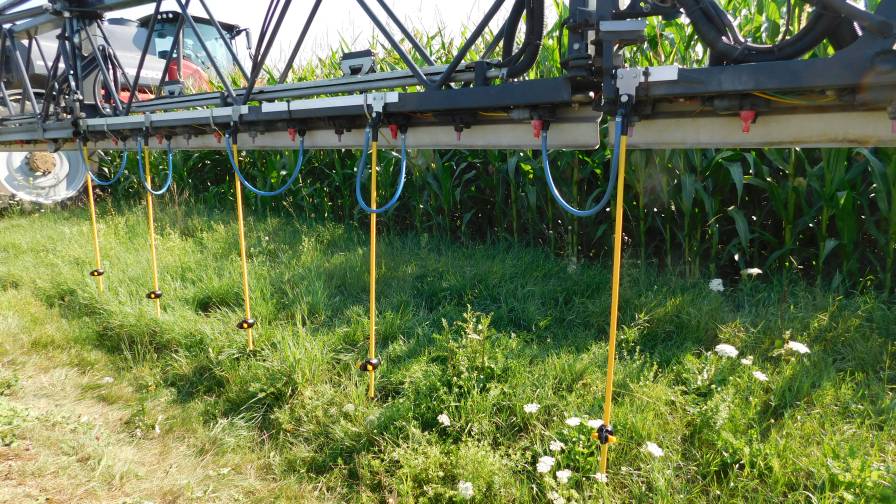Syngenta Steadies Ship For Long Haul
As the Japanese Cherry trees that hug the Potomac began to bloom and blast forth their vibrant pinkish-white hues — signaling the arrival of fall in our nation’s capital — Syngenta convened a group of ag media a mere stones throw from the Capitol Building to lay out its best laid plans for the coming years.
Touching on everything from Acuron, a new HPPD-inhibitor herbicide to debut for 2015, to its newish Water+ program, it was a jam packed two days that treated attendees to an inside glimpse at just how the Greensboro, NC-based biotech giant plans to hit a self-imposed $25 billion sales target by 2020 in a bear market.
“Historically it has been in periods of economic down cycle when Syngenta’s portfolio grows the most,” said Dan Burdett, head of customer marketing and services, during his presentation. “And the reason for that is simply both the depth and breadth of our portfolio.”
Operation Pollinator Update
Caydee Savinelli, career entomologist and now a pollinator and IPM stewardship lead with Syngenta, provided an update on Operation Pollinator. Savinelli didn’t pound the soap box and flat-out deny a link between neonicotinoid insecticides and pollinator decline, rather pointing to “multiple stressors affecting bee health” currently.

Caydee Savinelli, Syngenta
She did, however, take umbrage with the recently released EPA report claiming neonicotinoids don’t bring any yield benefits to soybean production.
“My take on that — and keep in mind it was a review of previously published research, not a new study — was that EPA looked at a small subset of the studies that are out there,” she argued. “In my experience small-plot research is not a good way to look at yield. Also what the media didn’t promote was the fact that they also looked at corn and those studies definitely showed yield benefits.”
Savinelli also discussed 2015 efforts for Operation Pollinator, such as continued focused research in three key regions for pollinator-dependent crops and ongoing collaborations with DELTA F.A.R.M. and Marriott Golf on growing pollinator habitats.
Pipeline Progress
Syngenta highlighted its slogan, “Bringing plant potential to life,” throughout the week — although there may be no better evidence of that commitment than the company’s robust pipeline. In row crop seed alone they plan to introduce 52 new hybrids in corn for 2015 along with 21 new soybean varieties.
New products are also coming online in three major crop protection segments — seed treatment, fungicide and herbicide.
Clariva Complete Beans is Syngenta’s new Soybean Cyst Nematode (SCN) seed treatment, according to Dale Ireland, technical product lead/seed care.
“Clariva Complete Beans is lethal to the juvenile soybean cyst nematode, reducing both the number of juveniles reaching the root, as well as killing infected juveniles that do reach the root. In addition, Clariva Complete Beans provides season-long SCN protection.” Ireland said. “It has shown very good stability across time, vast durability and a high potential for yield.”
Ireland reported that Syngenta is seeing a 4% yield advantage in side-by-side research trials with Bayer CropScience’s Poncho/VOTiVO.
The new fungicide active ingredient, given the brandname Solatenol, is a broad spectrum SDHI which Syngenta has formulated into four products, the most notable for our purposes being Trivapro (Solatenol+azoxystrobin+propiconazole), a corn, soybean and wheat product the company expects EPA to sign off on in time for 2015 growing season availability.
Allison Tally, technical brand manager, fungicides, says the product has pronounced activity on many foliar diseases and retailers will like its low use rate (1 ounce per acre).
“The addition of Solatenol brings increased residual and effective control of Southern rust and grey leaf spot, and it has some crop health enhancement properties as well,” said Tally. “The seed treatments are doing a great job on soil diseases but those foliar diseases, the actives don’t really make it up into the canopy to make a difference.”
Acuron herbicide (bicyclopyrone+atrazine), finally nearing commercialization after five years in development, is hoping to become the first herbicide registered for giant ragweed, according to Gordon Vail, technical product lead.
“This next HPPD inhibitor is a product that I’m very excited about — it has really shined on morning glory and has shown a nice four to six week residual,” Vail said.
Retailers can expect communications from Syngenta in the coming months as the company reaches out at the dealership level to make sure application is stewarded properly.
“We’ll put together a sheet that breaks down tank clean out and all of the possible tank mixes and get that out ahead of the product,” said Vail. “In January and February, we’ll be doing some large scale field tests. So far, all of the tank mixes look really good, but until you do large scale commercial trials you won’t really know.”
The Good Growth Plan
Jill Wheeler, head of sustainability, detailed activity around Syngenta’s Good Growth Plan, launched this past year with five international and domestic events. The sustainability initiative hopes to grow higher yields (25% in corn, 19% in soybeans for North America) with less via six commitments that range from making crops themselves more efficient to rescuing more farmland, promoting biodiversity, and empowering small holders and advocating worker safety.
The Good Growth Plan farm network, with 893 reference growers and 2,673 benchmark growers across five continents, will help Syngenta measure its progress towards those six commitments.
“The six commitments are highly measureable — nobody else has put hard numbers down on paper like this and said we’re going to hit these numbers,” said Wheeler. “And we will have the same firm that audits our financials audit this program and make the results public. This global view of agriculture, I don’t know if anybody else has done something like this before.”
The first progress report on The Good Growth Plan is slated for a first quarter 2015 release.






